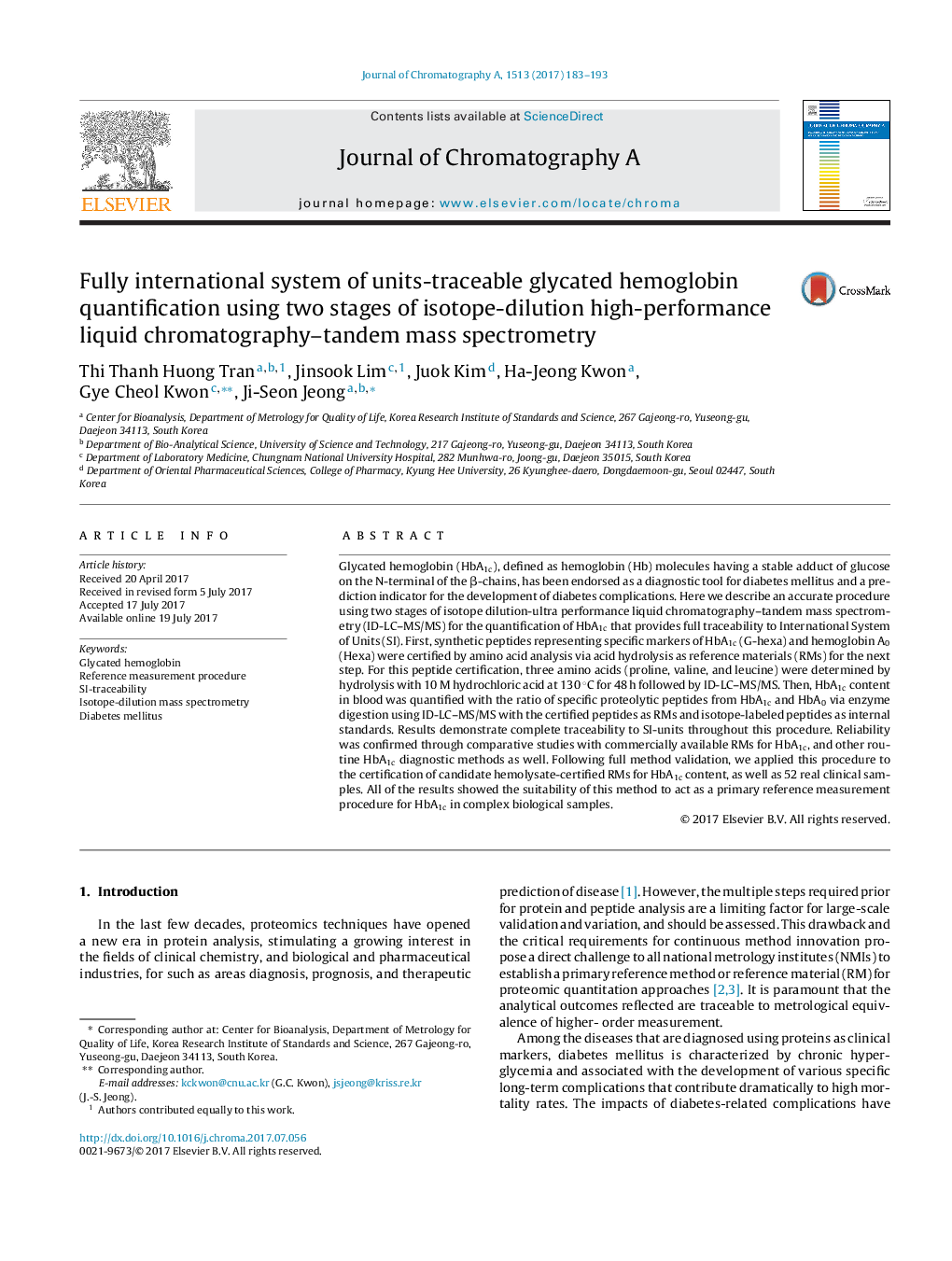| Article ID | Journal | Published Year | Pages | File Type |
|---|---|---|---|---|
| 5135300 | Journal of Chromatography A | 2017 | 11 Pages |
â¢A reference measurement procedure for absolute quantification of HbA1c using two stages isotope-dilution mass spectrometry.â¢The most straightforward approach for SI-traceable protein quantification.â¢Full estimation of measurement uncertainty in HbA1c quantification according to international standards.â¢The excellent measurement commutability in real sample and routine method.
Glycated hemoglobin (HbA1c), defined as hemoglobin (Hb) molecules having a stable adduct of glucose on the N-terminal of the β-chains, has been endorsed as a diagnostic tool for diabetes mellitus and a prediction indicator for the development of diabetes complications. Here we describe an accurate procedure using two stages of isotope dilution-ultra performance liquid chromatography-tandem mass spectrometry (ID-LC-MS/MS) for the quantification of HbA1c that provides full traceability to International System of Units (SI). First, synthetic peptides representing specific markers of HbA1c (G-hexa) and hemoglobin A0 (Hexa) were certified by amino acid analysis via acid hydrolysis as reference materials (RMs) for the next step. For this peptide certification, three amino acids (proline, valine, and leucine) were determined by hydrolysis with 10 M hydrochloric acid at 130 °C for 48 h followed by ID-LC-MS/MS. Then, HbA1c content in blood was quantified with the ratio of specific proteolytic peptides from HbA1c and HbA0 via enzyme digestion using ID-LC-MS/MS with the certified peptides as RMs and isotope-labeled peptides as internal standards. Results demonstrate complete traceability to SI-units throughout this procedure. Reliability was confirmed through comparative studies with commercially available RMs for HbA1c, and other routine HbA1c diagnostic methods as well. Following full method validation, we applied this procedure to the certification of candidate hemolysate-certified RMs for HbA1c content, as well as 52 real clinical samples. All of the results showed the suitability of this method to act as a primary reference measurement procedure for HbA1c in complex biological samples.
